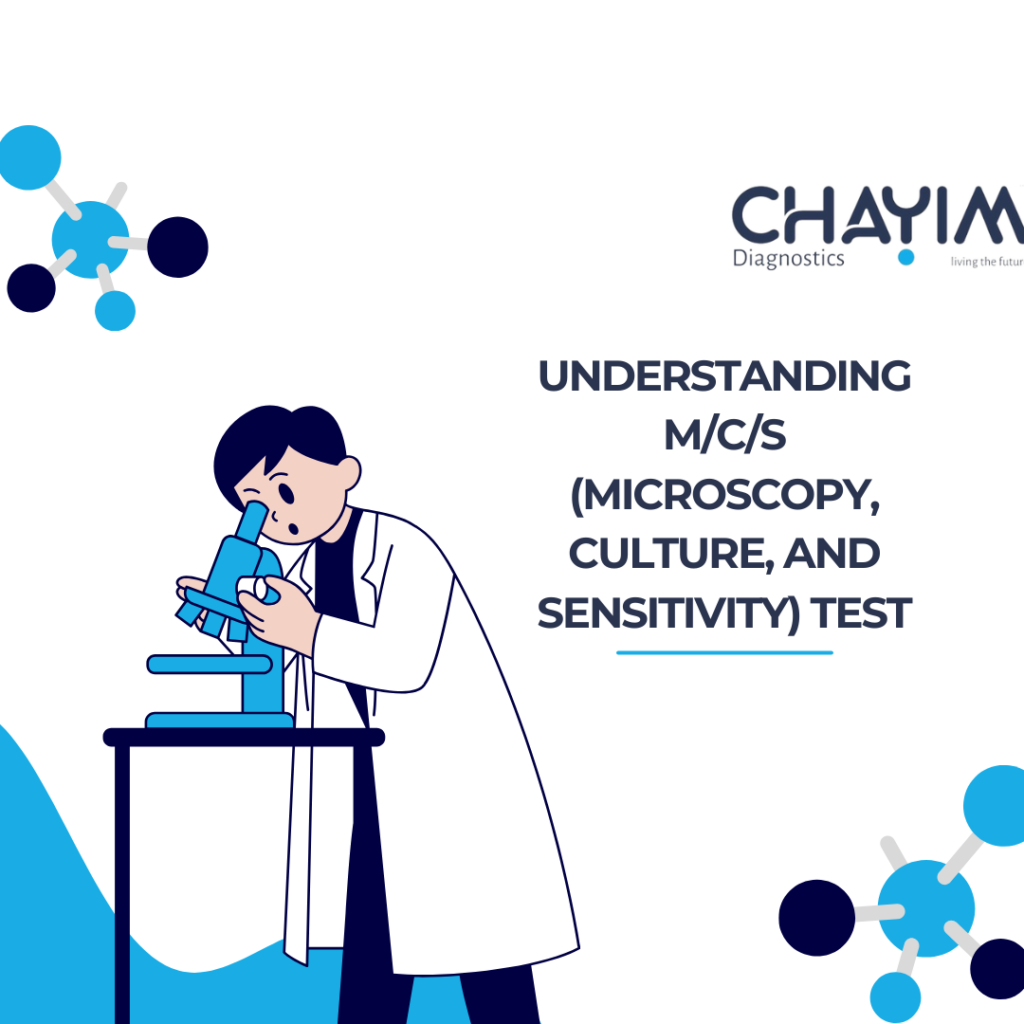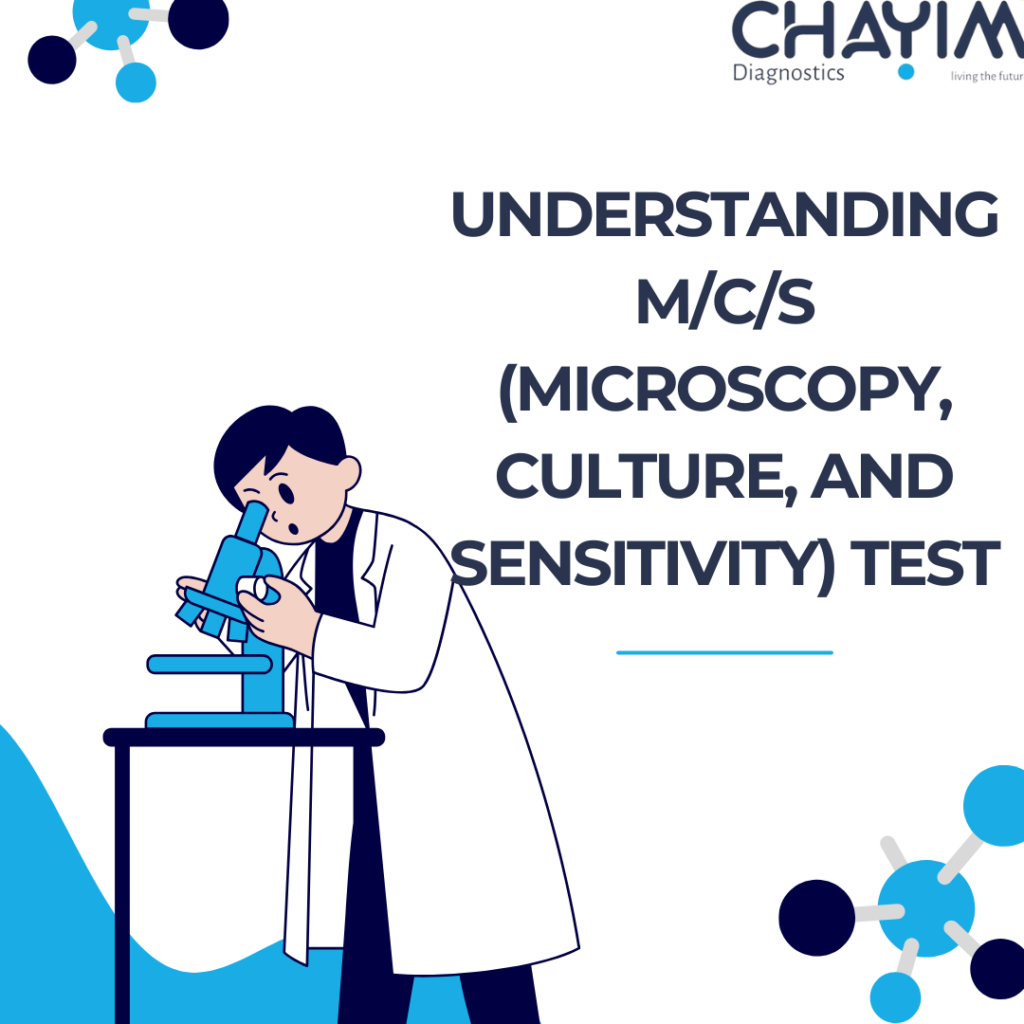Understanding M/C/S (Microscopy, Culture, and Sensitivity) Test

Infections are among the most common reasons people visit healthcare facilities. Proper identification of the causative microorganism and knowing which antibiotic will effectively treat it is key to recovery. One of the most reliable ways doctors achieve this is through an M/C/S (Microscopy, Culture, and Sensitivity) test.
In this article, we will break down what an MCS test is, when and why sensitivity may not be performed, and how to interpret the results.
What is an M/C/S Test?
The M/C/S test is a three-step laboratory investigation used to detect and identify microorganisms (usually bacteria or fungi) in any biological sample, determine their concentration, and assess their sensitivity to antibiotics. It is typically carried out when an infection is suspected, to guide appropriate treatment. Common sample collection sites include urine, blood, wound swabs, sputum, ear or throat swabs, stool, and other body fluids, depending on the suspected site of infection.
1. Microscopy:
The first step involves examining the biological sample (urine, blood, sputum, wound swab, or stool) under a microscope. This allows scientists to observe microscopic elements such as bacteria, pus cells, fungi, parasites, or epithelial cells, offering early clues about the type of infection.
2. Culture:
In this step, the sample is placed in a special medium that encourages the growth of any microorganisms present. After incubation for 24 hours, the scientist identifies the type of organism based on its appearance, color, shape, and growth pattern alongside suitable biochemical tests.
3. Sensitivity (Antibiotic Susceptibility Testing):
Once the organism is identified, it is tested against a range of antibiotics to determine which ones are most effective in killing or inhibiting its growth.
When is an MCS Test Recommended?
Doctors request for an M/C/S test when an infection is suspected. These include but are not limited to:
Urinary Tract Infections (UTI)
Respiratory infections (chronic cough, pneumonia)
Wound or skin infections
Gastrointestinal infections
Bloodstream infections (sepsis)
When Sensitivity Testing is NOT Done – and Why
Not all culture results will come with a sensitivity report. Here are common reasons why:
No Growth in Culture:
If the culture shows “No growth,” it means no significant microorganisms were found, and so, sensitivity testing is unnecessary.
Normal Flora or Contaminants Detected:
Sometimes, the culture grows organisms that are part of the body’s normal flora (harmless microorganisms)), or contaminants introduced during sample collection. In such cases, sensitivity testing is not done because the growth does not represent infection.
Sensitivity testing is not limited to bacteria as it can be done on fungal isolates as well. However, there is a limitation to fungal sensitivity testing as the discs may be less common to find. In most cases, fungal infections have well-established first line and second-line antifungal treatments. It is important to note that a doctor’s opinion and prescription is strongly advised for treatment options for antifungal infections as treatment options are unique based on age, severity of infection and the infected site.
How to Interpret Your M/C/S Results
When you receive your MCS (Microscopy, Culture, and Sensitivity) test results, here’s what they mean in simple terms:
Microscopy (First Examination Under the Microscope)
- Pus cells present – This suggests an infection.
- Bacteria seen – Likely an infection, but further testing (culture) will confirm.
- Yeast cells found – Could indicate a fungal infection.
Culture (Growing the Germs to Identify Them)
- No Growth – No infection found, or the bacteria level is too low to detect.
- Growth of a specific pathogen– Shows the exact bacteria or fungi causing the infection.
- Mixed Growth – Usually means contamination; you may need to repeat the test.
Sensitivity Testing (If performed)
- S (Sensitive) – The antimicrobials identified will destroy the bacteria or fungi.
- R (Resistant) – The antimicrobial is
Why is MCS Important?
An M/C/S test is essential for accurately diagnosing infections and guiding doctors in prescribing the most effective treatment, rather than relying on broad-spectrum antibiotics. This helps prevent the misuse of antibiotics and other medications, reducing the risk of antibiotic resistance while promoting faster recovery and better health outcomes. Undergoing an M/C/S test also enables you to have informed discussions with your doctor about the best course of treatment. However, always consult your doctor before undergoing any test or taking medication to ensure proper diagnosis and treatment.



Responses